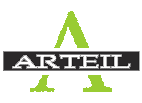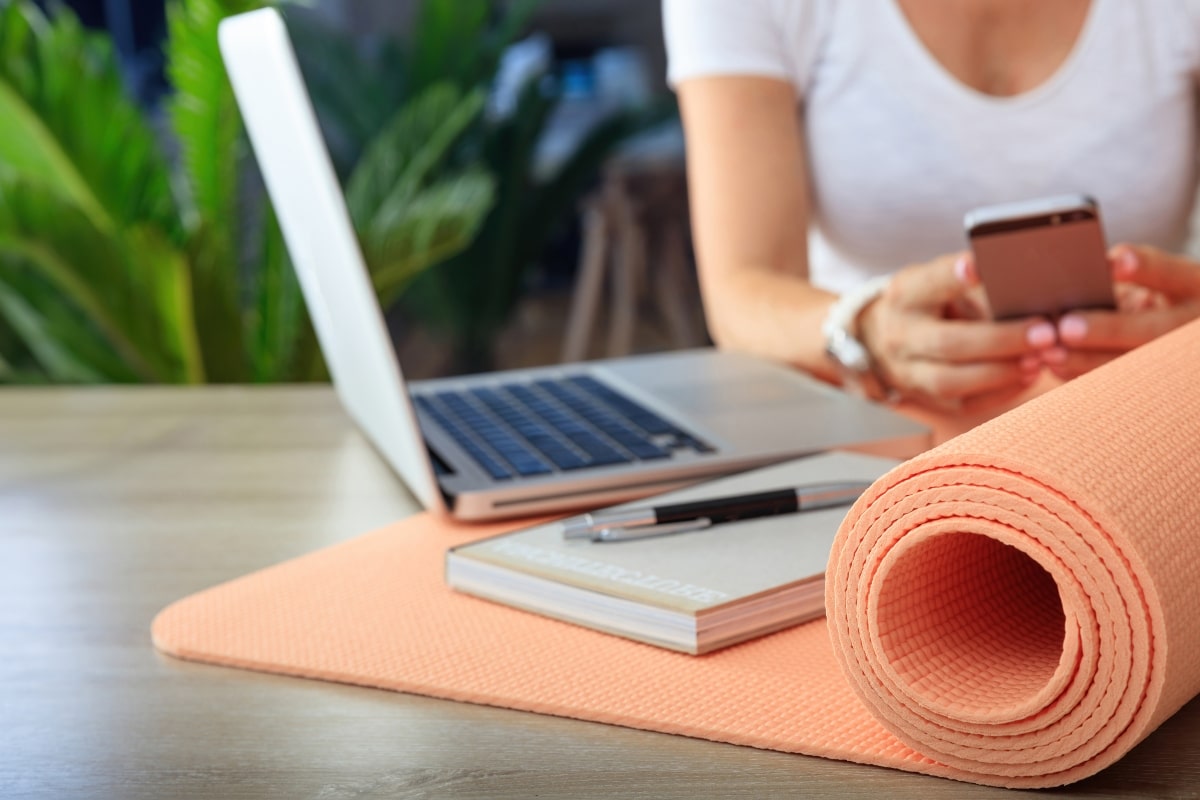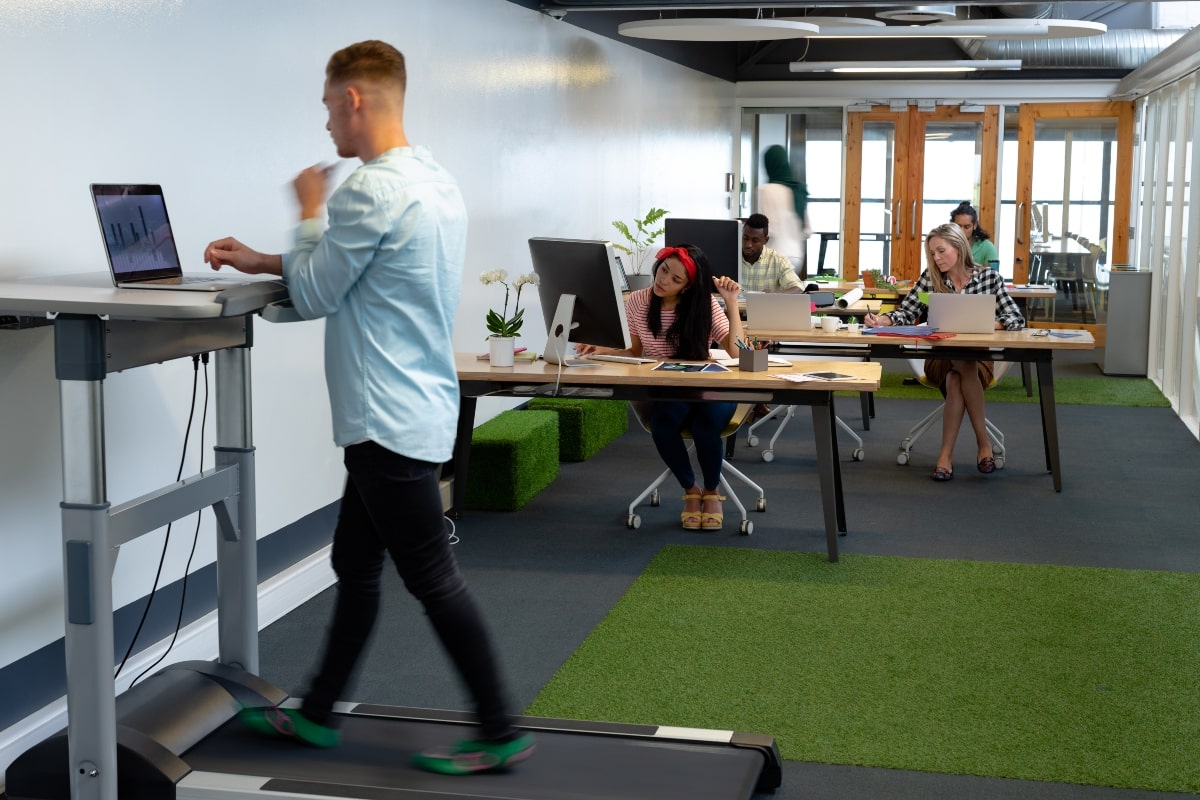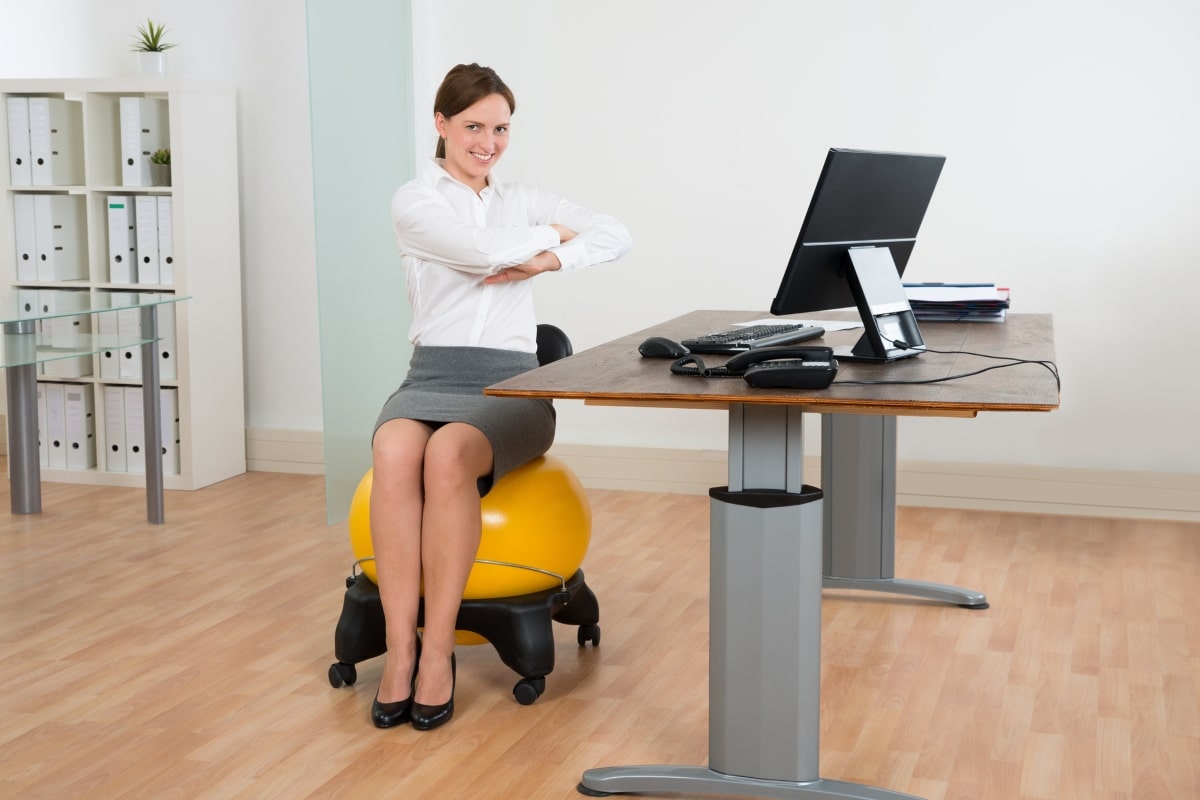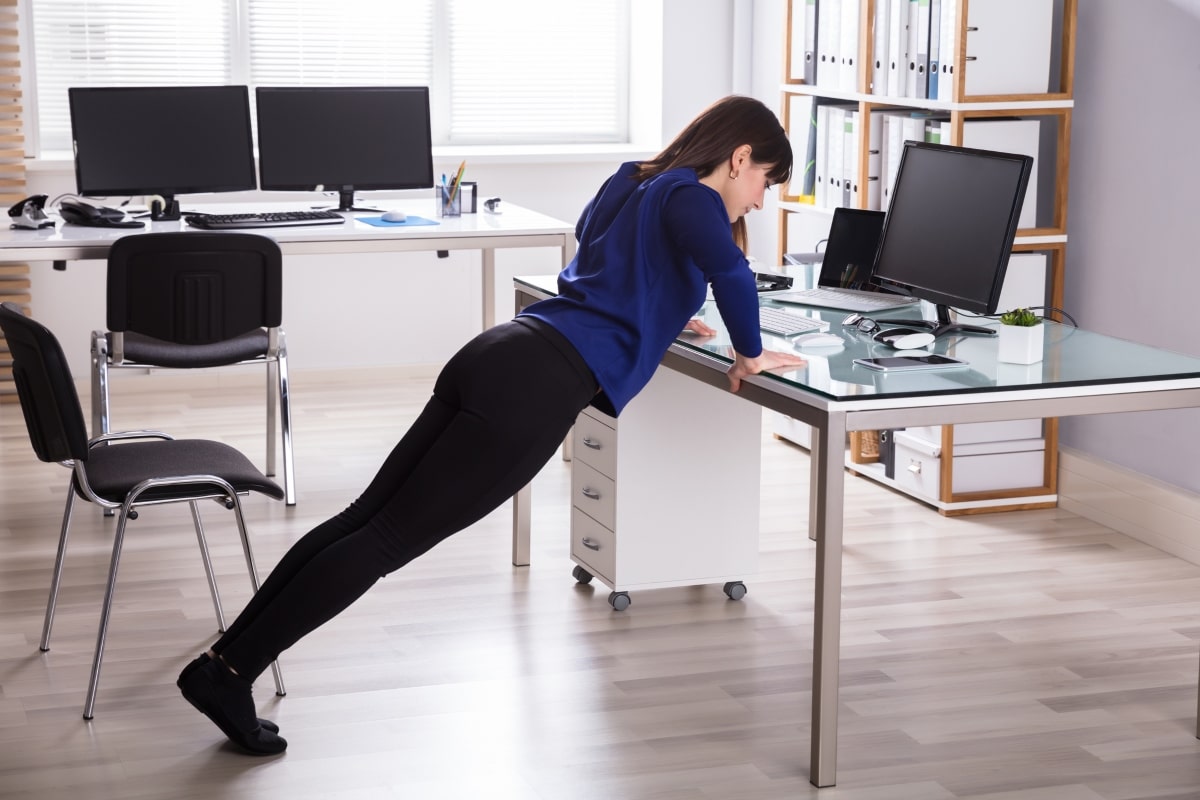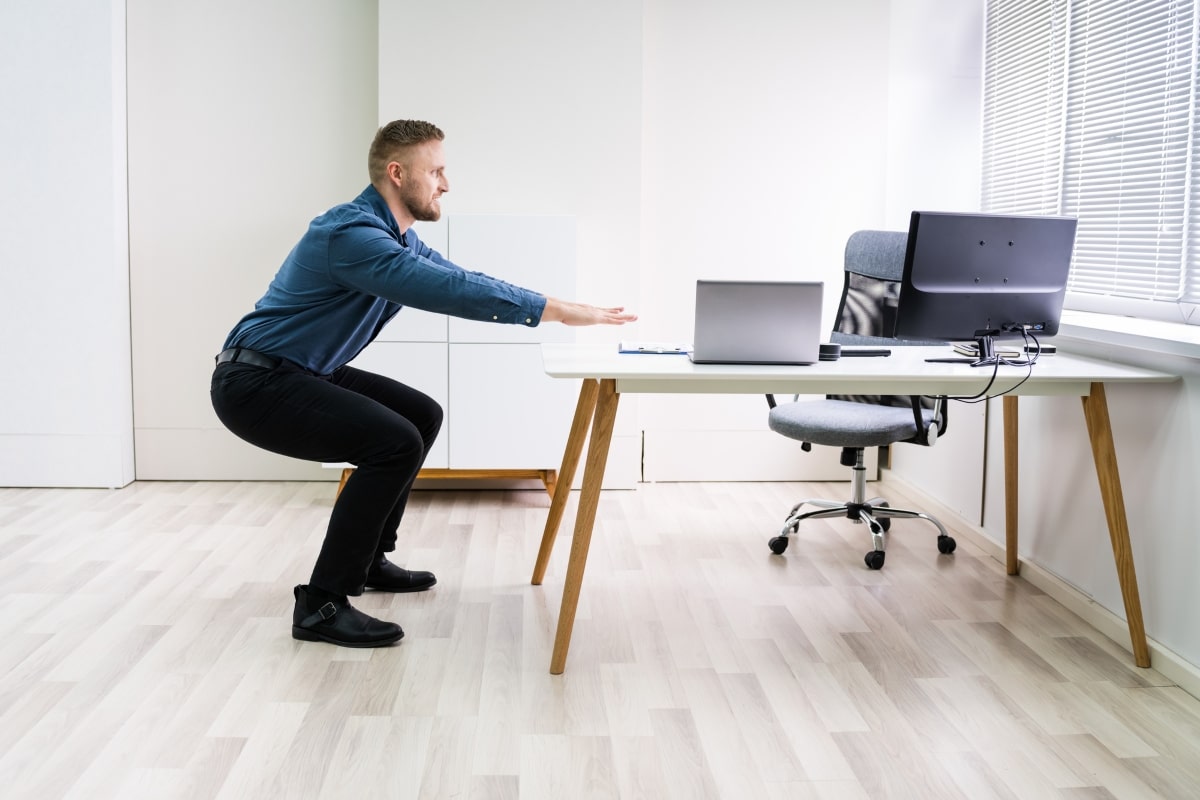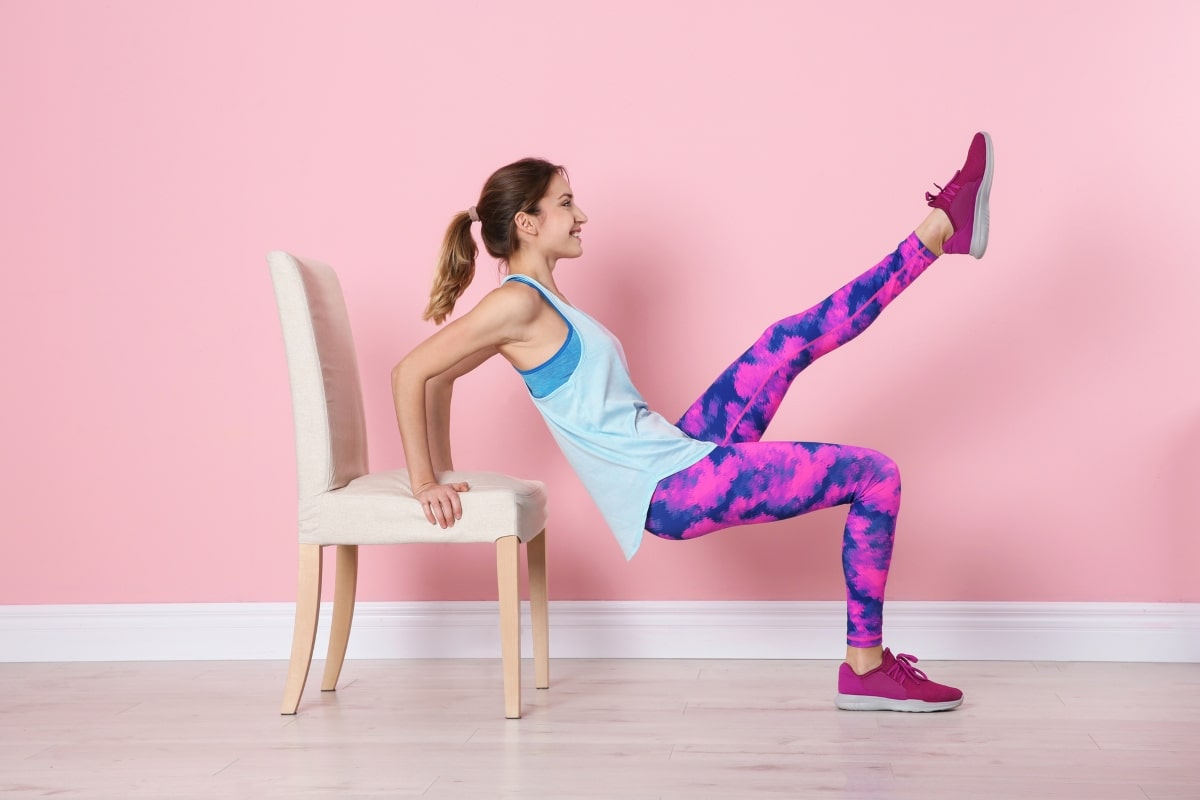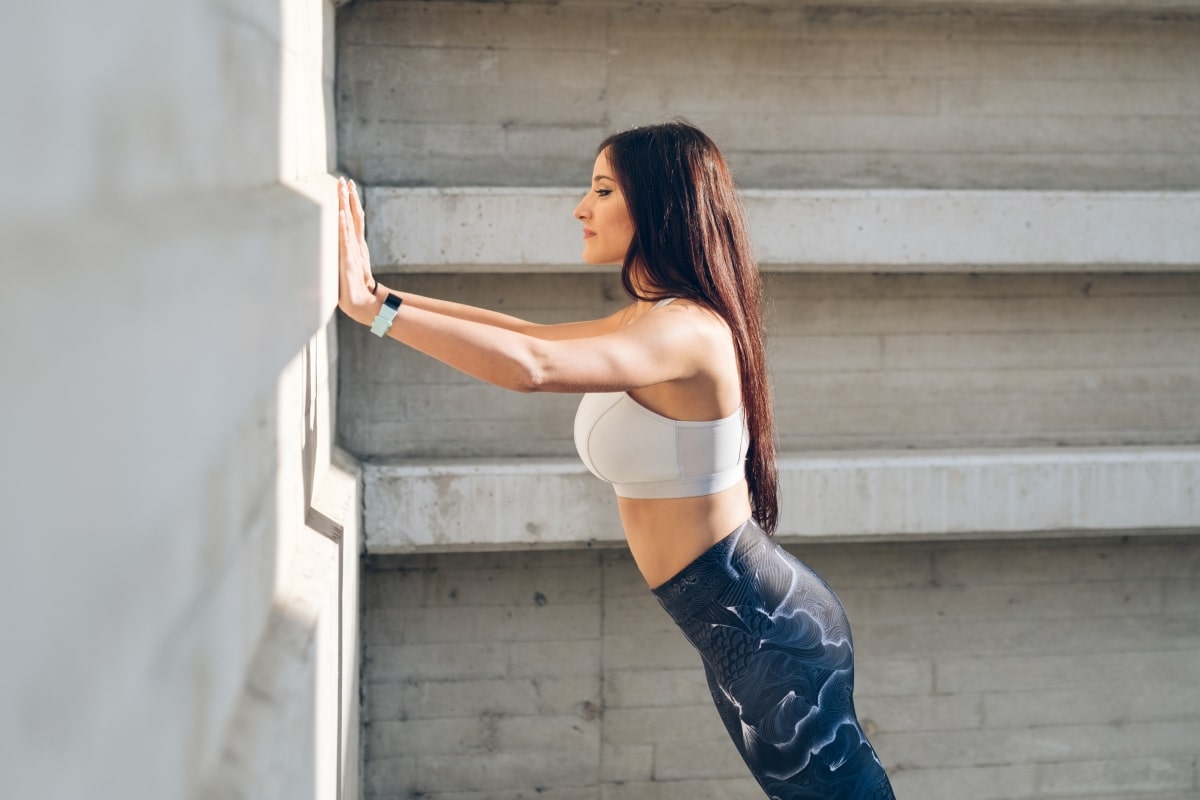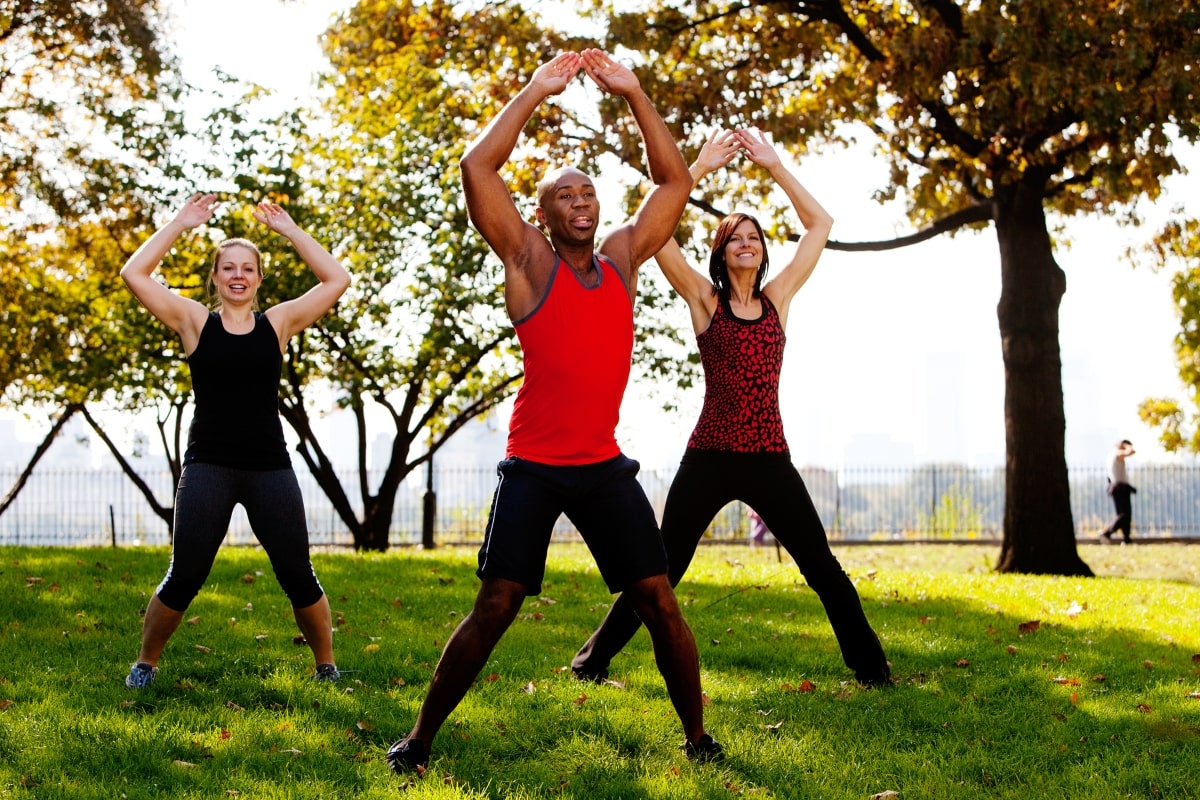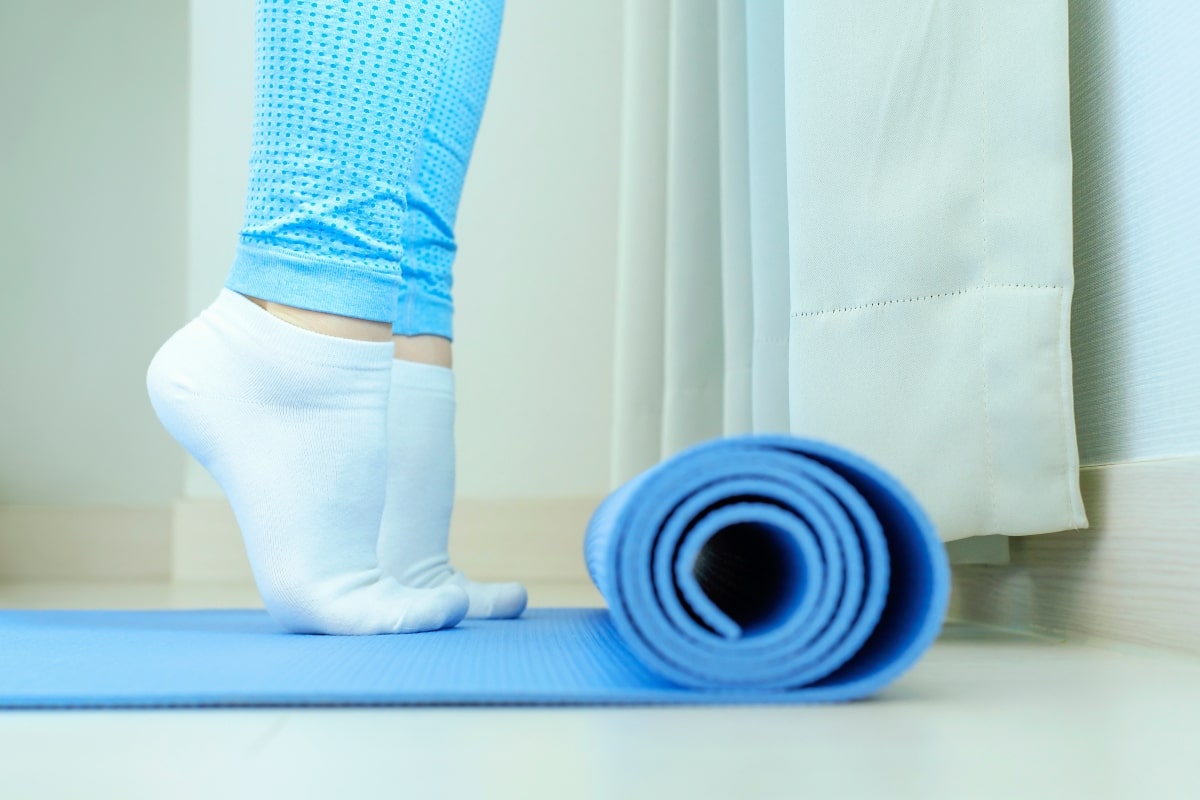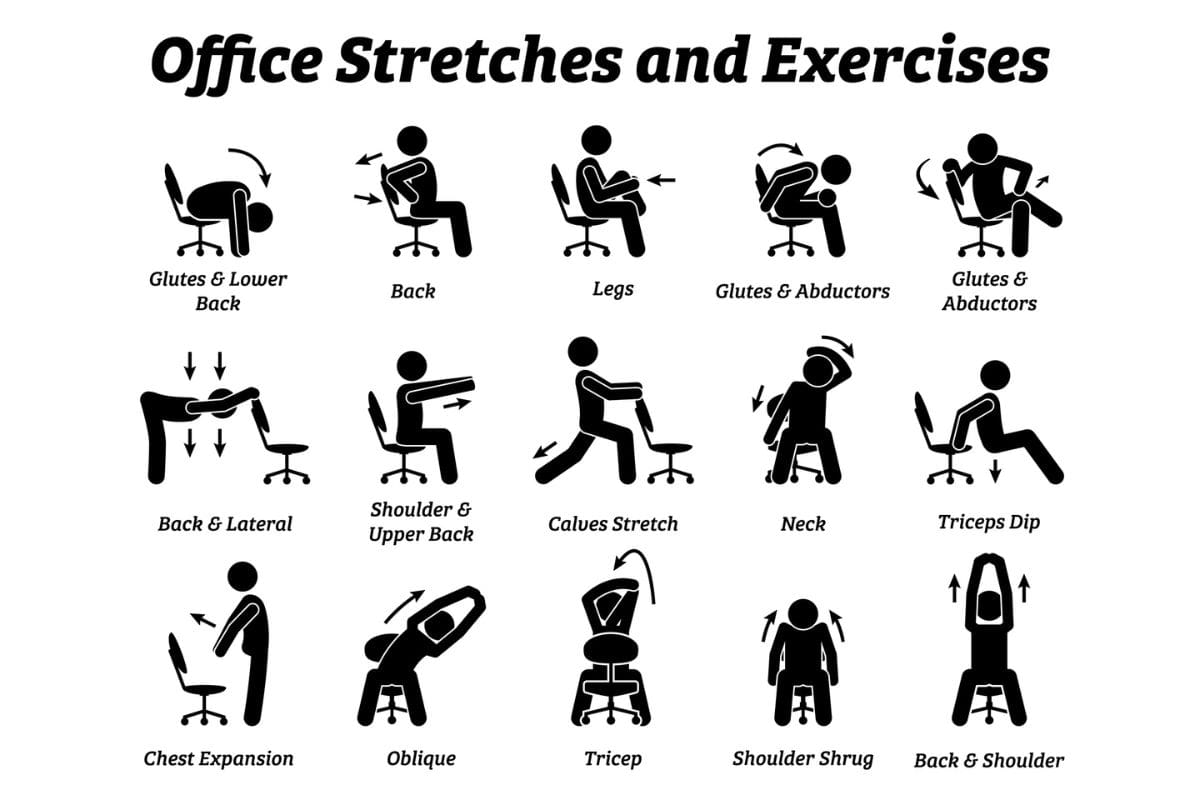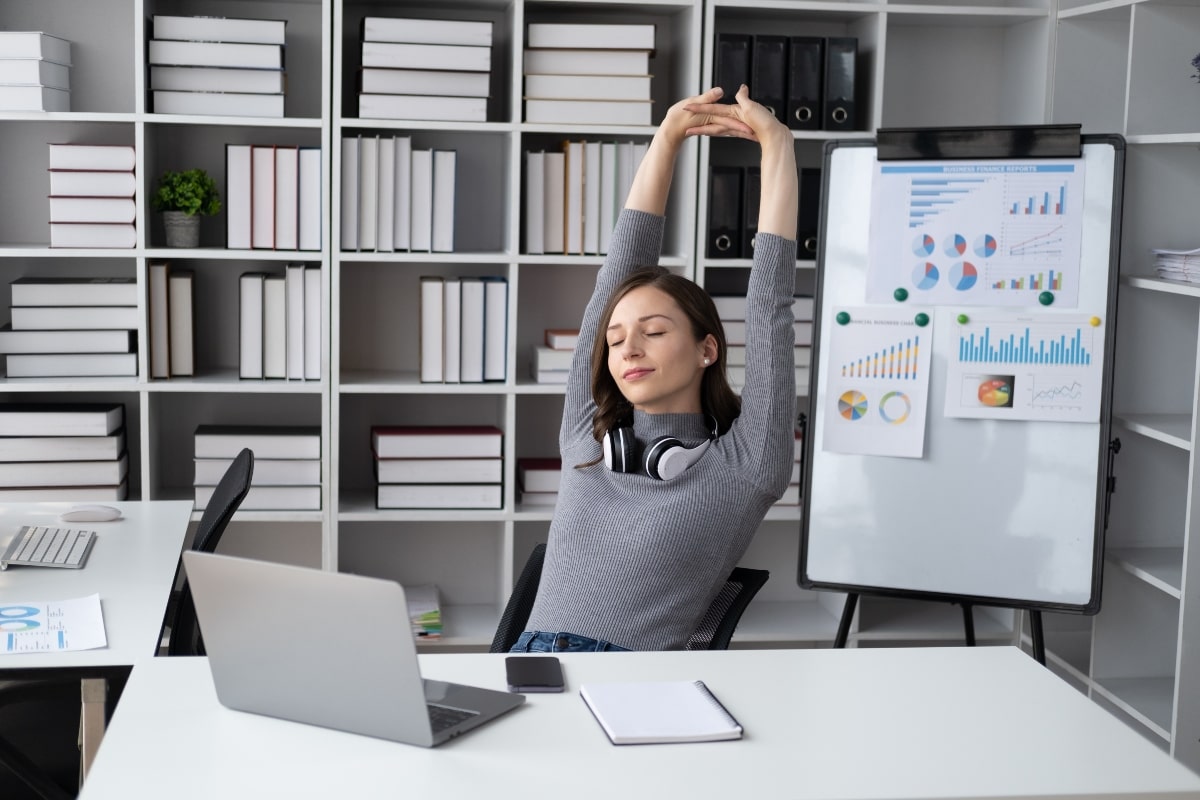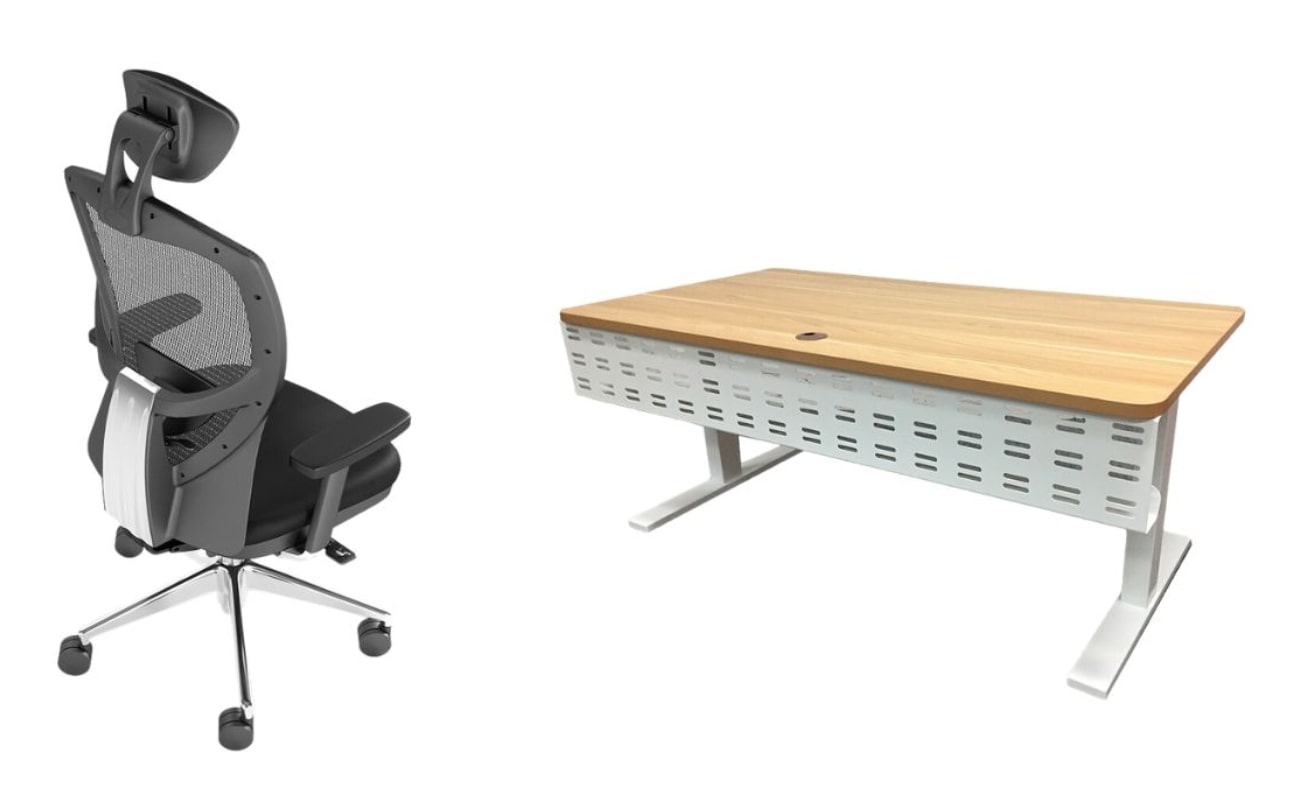Office exercises may not be the first thing that comes to mind when you think about staying healthy, but they’re a game changer in today’s busy, sedentary world. It’s no secret that many of us are confined to our office chairs for hours on end, battling deadlines, meetings, and an endless flood of emails. But did you know that it’s possible to combat the ill effects of sitting all day without even leaving your desk?
Understandably, finding enough time to work out and stay healthy can be difficult, especially if you have a tight work schedule. Fortunately, there is a way around this. Spending a few minutes exercising at your office desk can help counter the effects of prolonged sitting and stimulate your blood flow during a busy workday.
Engaging in desk exercises, taking small movement breaks and using a standing desk can help improve your physical and mental health without hurting your productivity.
From simple stretches that can ease the strain on your lower back to quick, discreet exercises that improve your core strength, we’ve got you covered. These office exercises are not just designed to break the monotony of your desk job but can seamlessly blend into your daily routine, promoting both your physical and mental well-being.
The importance of desk exercises for office workers
According to a recent report from the Property Council of Australia, Perth’s office occupancy levels have reached a staggering 80%, the highest in the nation. Like in other parts of Australia, workers in these offices spend about 76% of their time at work sitting. While this may not seem like such a big deal to some, prolonged sitting has been linked to cardiovascular disease, high blood pressure, obesity and musculoskeletal disorders.
Office exercises can bring a remarkable change to your overall health and wellness. Beyond the immediate relief from common discomforts like neck or lower back pain, these exercises can help improve your posture, enhance your concentration, and boost your mood.
The problem with extended sitting
Sitting for extended periods has been linked to many physical problems, including poor posture, back pain and neck strain. The pain in your back and neck can range from a mild annoying ache to persistent and disabling pain. If this pain is not managed, it can easily restrict mobility, interfere with the normal functioning of your body, reduce your productivity at work and affect your quality of life.
Research also shows that people with high back and neck pain tend to suffer from poor sleep quality, leading to an increase in the symptoms of depression.
In addition to causing chronic back pain and neck strain, extended sitting is likely to cause obesity among office workers. According to recent studies, every 2-hour increment in sitting time increases the risk of obesity and diabetes by 5% and 7%, respectively. Even worse, people who spend most of their time sitting have a 1.4 times bigger chance of premature death after 12 years than their counterparts who sit less at work.
Benefits of office exercises
Engaging in office exercises is a great way to stay active and healthy without requiring the time or equipment of a gym workout.
Here are some benefits of office exercises:
Improves your posture
Incorporating office exercises and stretches into your workday routine can strengthen and align your back muscles. This helps develop flexibility and balance in your core and body, improving your posture. According to a study by PubMed Central, upright posture can significantly improve positive affect and reduce fatigue among people with depression.
Boosts energy levels
Office exercises keep your body active and create physical changes that boost your energy levels. Research also shows that regular exercise increases endorphin levels in the body, significantly boosting your mood. High energy levels and a positive mood will make you feel more productive, motivated and energised at work.
Enhancing circulation
Engaging in office exercises warms you up and improves blood circulation. According to vascular medicine specialist Deborah Hornacek, MD, your arteries increase the release of nitric oxide every time you exercise. This helps relax your blood vessels and improve blood flow in your body. Healthy blood circulation is vital for the proper functioning of your body and productivity at work.
Easy office exercises you can do at work
Regardless of age, profession or physical fitness, incorporating chair and desk exercises in your daily routine can significantly improve your physical health, mental wellness and productivity at work.
Below are some easy office exercises to do at your desk with no or minimal equipment:
1. Seated spinal twist
How: Sit up straight in your office chair, place your hand on the back of the chair, engage your core, and gently twist your upper body to the side. Hold for about 30 seconds, and then repeat the process on the other side.
Benefits: Seated spinal twists will help strengthen your core, stretch the upper body, reduce stiffness in your back, and promote good posture as you work.
Tip: You can do this exercise after 2 hours to release tension in your back and improve spinal mobility.
2. Desk push-ups
How: Stand facing your office desk, place both palms on the edge of the desk, position your body at a 45° angle, engage your core, and perform push-ups at a slow, steady pace. Bend your elbows to slowly lower your upper body toward the desk, and then push them back up. Exhale as you push down, and inhale as you push up. Do this at least 10 times.
Benefits: This exercise helps build your upper body strength and improve blood circulation by engaging your chest, arms and core.
Tip: Squeeze in about 15 desk push-ups after every 3 hours.
3. Chair squats
How: Stand up in front of your office chair, feet shoulder width apart, and keep your arms stretched out in front of you. Start squatting down until your buttocks touch the chair while keeping your knees aligned with your toes. Return to the starting position and repeat the movement about 20 times.
Benefits: Squats are a great way to strengthen your lower body and leg muscles.
Tip: Perform about 20 chair squats after every 2-3 hours until you feel a slight muscle burn in your legs.
4. Triceps dips
How: All you need for this exercise in the office is a sturdy desk chair. Scoot to the front of the chair with both hands facing forward. Place your palms flat on the seat of the chair, with your fingers pointing towards you. Keep your heels on the ground with your legs bent at a 90-degree angle. Lower yourself until your upper arms are almost parallel to the ground, then slowly lift yourself back up to the starting position. Repeat this exercise for at least 10 reps.
Benefits: Triceps dips work your triceps, chest, and shoulders, which helps to tone and strengthen your upper body. Plus, this exercise can be done almost anywhere, making it a convenient way to sneak in some extra workout time during a busy day.
Tip: Use a stable chair without wheels so you won’t move around while you’re performing the dips. To make this exercise more challenging, try doing it with one leg straight out in front of you. This variation engages your core and glutes even more.
5. Wall push-ups
How: Start by standing a few steps away from a wall, with your feet hip-width apart. Place your palms flat on the wall, making sure your hands are at shoulder height and shoulder-width apart. Activate your core by tightening your abs. This will help keep your body in a straight line from head to toe. Slowly bend your elbows and start leaning your body toward the wall. Keep your back straight and your elbows bent at a 45-degree angle. Lower yourself as close to the wall as you can comfortably manage without straining your neck or back. Pause at the bottom of the movement for a moment, then slowly push yourself back up to the starting position. Repeat this movement for 20 reps.
Benefits: Wall push-ups are a great way to strengthen your chest, shoulders, arms and upper back muscles. This exercise is especially effective for beginners since it helps to build upper body strength without requiring you to lift your entire body weight.
Tip: While performing the wall push-ups, make sure that your spine is neutral and your hips do not dip forward. If you’re new to this exercise, start with a smaller distance between your feet and the wall.
6. Jumping jacks
How: Stand with your feet shoulder-width apart and your arms by your sides. Jump up and simultaneously spread your legs out to the sides while raising your arms above your head. Jump back to the starting position, bringing your legs together and your arms back down to your sides. Repeat continuously for at least 10 repetitions.
Benefits: Jumping jacks are a great form of cardiovascular exercise that works your whole body. By incorporating jumping jacks into your fitness routine, you can improve your heart health, endurance, coordination, and even burn calories!
Tip: To make jumping jacks more challenging, try performing a “power jack” by jumping as high as possible and sinking down into a half-squat when you land.
7. Calf raises
How: Start by standing behind a chair or sturdy surface for added support. Keep your head up, shoulders back, and feet hip-width apart. Slowly raise your heels off the ground while keeping your toes on the floor. Hold this position for 1-2 seconds, then lower your heels back down to the floor. Repeat this movement for 10-15 repetitions, for at least 3 sets.
Benefits: Calf raises are a simple and effective exercise that targets the calf muscles, building strength and endurance. Strong calf muscles also help to support proper posture, reduce the risk of injury, and improve athletic performance.
Tip: Avoid rushing through the movement and focus on keeping a slow, controlled pace. Make sure to keep your core tight and engage your glutes as you lift your heels.
8. Neck rolls
How: Start by sitting comfortably in a chair with your head forward. Slowly lower your chin towards your chest and begin to roll your head in a circle on one side. Hold this position for 10 seconds. Slowly roll towards the other side, until your chin touches your other shoulder. Hold this position for 10 seconds. Repeat this movement for 3 sets in each direction.
Benefits: Neck rolls help to increase flexibility and range of motion in your neck. Gentle stretching can also help to relieve headaches and improve posture.
Tip: Be sure to move your head slowly and gently, avoiding any sudden or jerky movements that could cause injury or strain.
9. Shoulder rolls
How: Stand or sit in a comfortable position with your spine straight. Gently raise both of your shoulders towards your ears. Slowly roll your shoulders backward in a circular motion. Repeat the same movement by rolling your shoulders forward. Complete three sets of backward and forward rolls each.
Benefits: Shoulder roll stretches are an excellent exercise to relieve tightness and tension in the shoulder area, reducing stiffness and improving the flexibility of the upper body.
Tip: Take deep breaths in and out while performing these rolls to help relieve further tension. You can intensify the stretch by holding your shoulder blades together as you roll.
If you’re new to exercise, start with a lower number of reps and gradually increase as your muscles get stronger. And remember, always consult with a healthcare professional before beginning any new exercise routine.
The power of small movement breaks
Even though taking small movement breaks throughout the day doesn’t have the same impact as taking a day off, research shows it has several benefits. Most of the time, taking small breaks can reduce the need for a long recovery period at the end of the day.
Here are some benefits of taking small breaks throughout the day:
- Improves mental wellness
- Promotes healthy habits
- Improves creativity
- Reduces stress levels
- Lessen body pain and ache
Tips for implementing breaks effectively
- Take a small break for every 2 hours of work.
- Set a reminder for your desk workout to ensure punctuality.
- Use your breaks wisely. For example, you may use your break to perform short bouts of aerobic exercise, stretches, go for a walk, or chat with a colleague.
- Consider sitting at your desk on an exercise ball, using a standing desk, or investing in treadmill desks to really get the heart pumping.
The role of ergonomic office furniture
A workplace designed with ergonomics in mind aims to improve your posture, reduce strain, alleviate back pain, and boost productivity.
Here are some features you should look for when purchasing office ergonomic furniture:
Quality fabrics and materials
Fabric quality can make a huge difference in the durability and comfort of your desk chair. Choose high-quality office chair fabrics for durability and maximum comfort.
Adjustable features
When shopping for ergonomic office furniture, opt for options with adjustable features to accommodate different body types. An office chair with an adjustable backrest, sliding seat, independent air lumbar, armrest and headrest, like Arteil’s Synchro Mesh Executive, can help achieve the right posture and reduce stiffness on the back.
Standing desks
If you’d like a sit-and-stand setup in your office, consider purchasing an office desk that can easily be adjusted between a sitting and standing position. Adjustable desks such as Arteil’s Elevate Sit-Stand Desk are a great option, encouraging little bursts of activity throughout the day.
Say goodbye to back pain with Arteil’s range of ergonomic office furniture
Incorporating exercises at your desk can have a significant positive impact on those working in a sedentary environment. You can have a positive effect on your physical health, mental well-being, and overall work productivity.
Are you looking for office chairs that provide maximum comfort and improve posture? Check out the extensive range of ergonomically designed sit-stand desks and office chairs by Arteil. We also offer custom-built chair options to suit your unique workplace needs.
Get in touch today or visit us at our O’Connor showroom.
